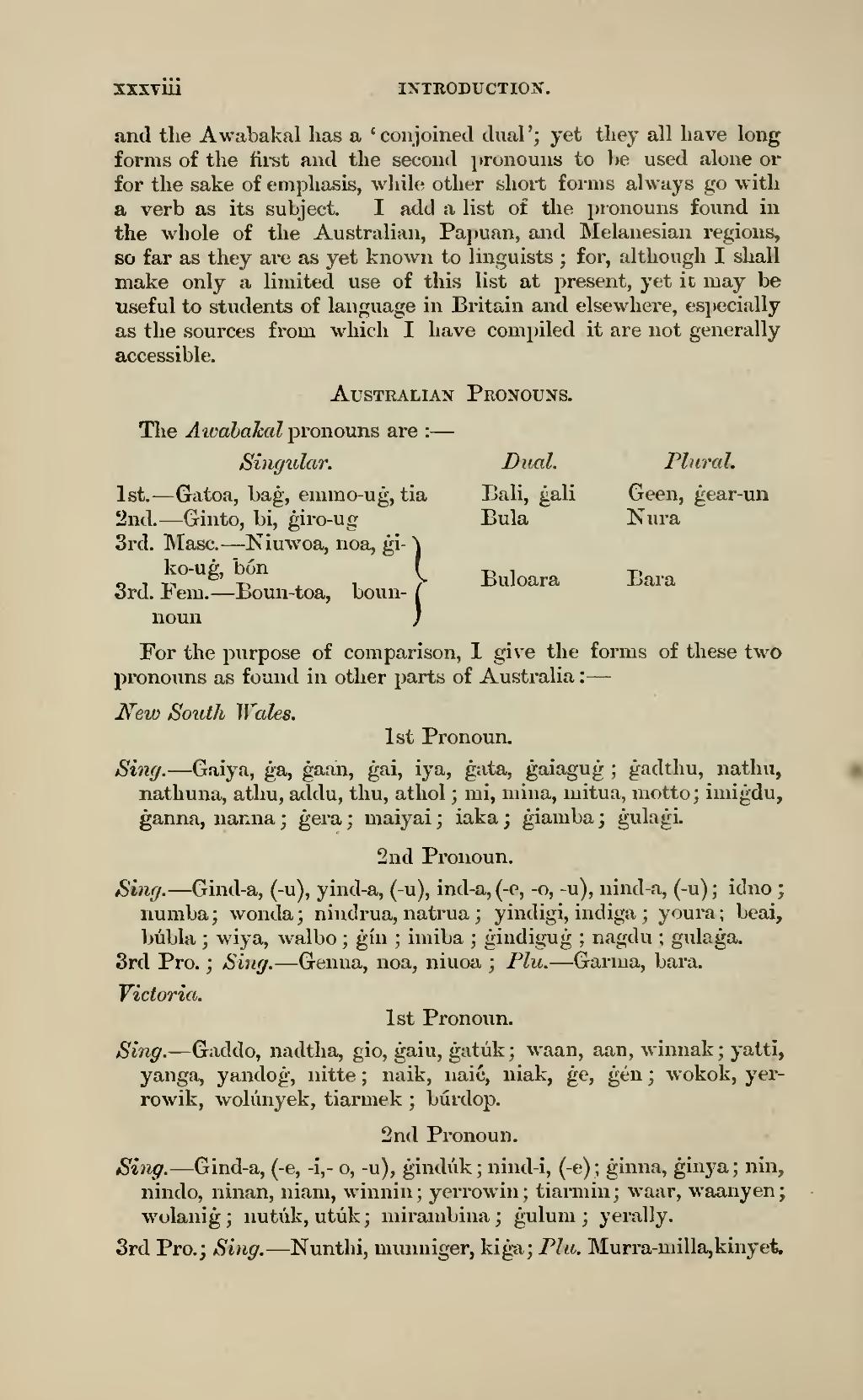SXXVm INTRODUCTION.
and the Awabakal has a 'conjoined dual'; yet they all have long forms of the first and the second ])ronouns to be used alone or for the sake of emphasis, while other short forms always go with a verb as its subject. I add a list of the pronouns found in the whole of the Australian, Papuan, and Melanesian regions, so far as they are as yet known to linguists ; for, although I shall make only a limited use of this list at present, yet it may be useful to students of language in Britain and elsewhere, esjtecially as the sources fi-om which I have compiled it are not generally accessible,
Australian Pronouns.
The Awabakal pronouns are : —
Singular. Dual. Plural.
1st. — G-atoa, bag, emmo-ug, tia Bali, gali Geen, gear-un
2nd. — G-into, bi, giro-ug Bula Nura
3rd. Masc- — Niuwoa, noa, gi- '\
ko-ug, bon (_ Buloara
3rd. Fem. — Boun-toa, boun-
��Bara
��For the purpose of comparison, I give the forms of these two pronouns as found in other parts of Australia : —
New South Wales.
1st Pronoun.
Sing. — Gaiya, ga, gaan, gai, iya, gata, gaiagug ; gadthu, nathu, nathuna, athu, addu, thu, athol ; mi, mina, mitua, motto; imigdu, ganna, nanna; gera ; maiyai; iaka ; giamba; gulagi.
2nd Pronoun.
Sing. — Gind-a, (-u), yind-a, (-u), ind-a, (-e, -o, -u), nind-a, (-u); idno ; numba; wonda; nindrua, natrua ; yindigi, indiga ; youra; beai, biibla ; wiya, Avalbo ; gin ; imiba ; gindigug ; nagdu ; gulaga.
3rd Pro. ; Si^ig. — Genua, noa, niuoa ; Plu. — Garnia, bara.
Victoria.
1st Pronoun.
/S'm^r.— Gaddo, nadtha, gio, gain, gatiik; waan, aan, winnak; yatti, yanga, yandog, nitte ; naik, naic, niak, ge, gen ; wokok, yer- rowik, wolunyek, tiarmek ; biirdop.
2nd Pronoun.
Sing. — Gind-a, (-e, -i,- o, -u), ginduk; nind-i, (-e); ginna, ginya; nin, nindo, ninan, niam, winiain; yerrowin; tiarmin; waar, waanyen; wolanig ; nutuk, utiik; mirambina ; gulum ; yerally.
3rd Pro.; Sing. — Nunthi, munniger, kiga; Plu. Murra-milla,kinyet.
�� �
